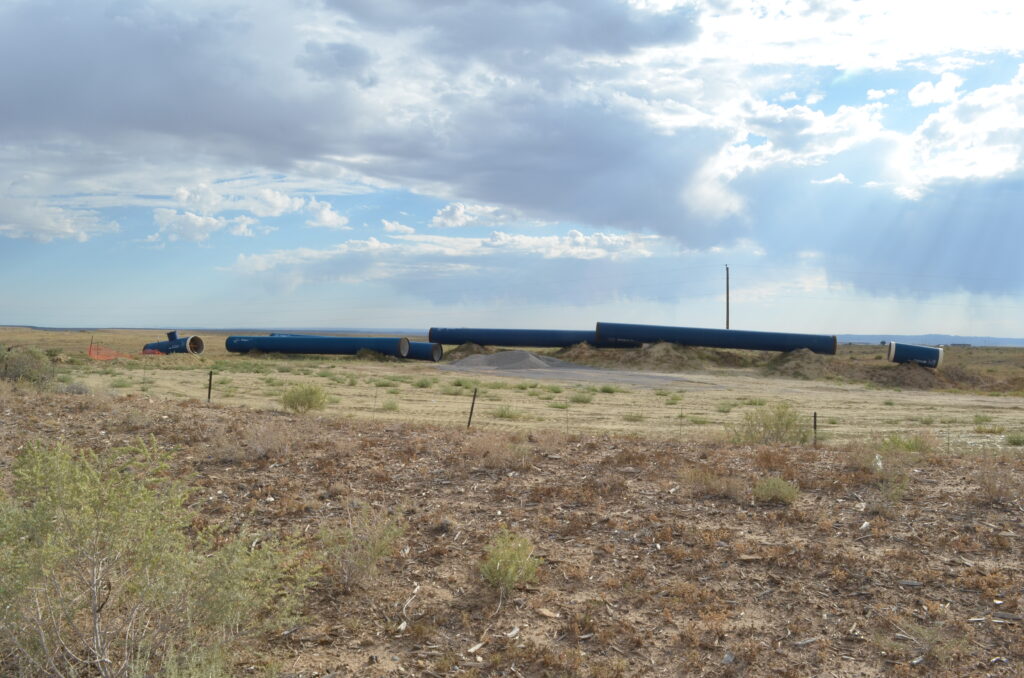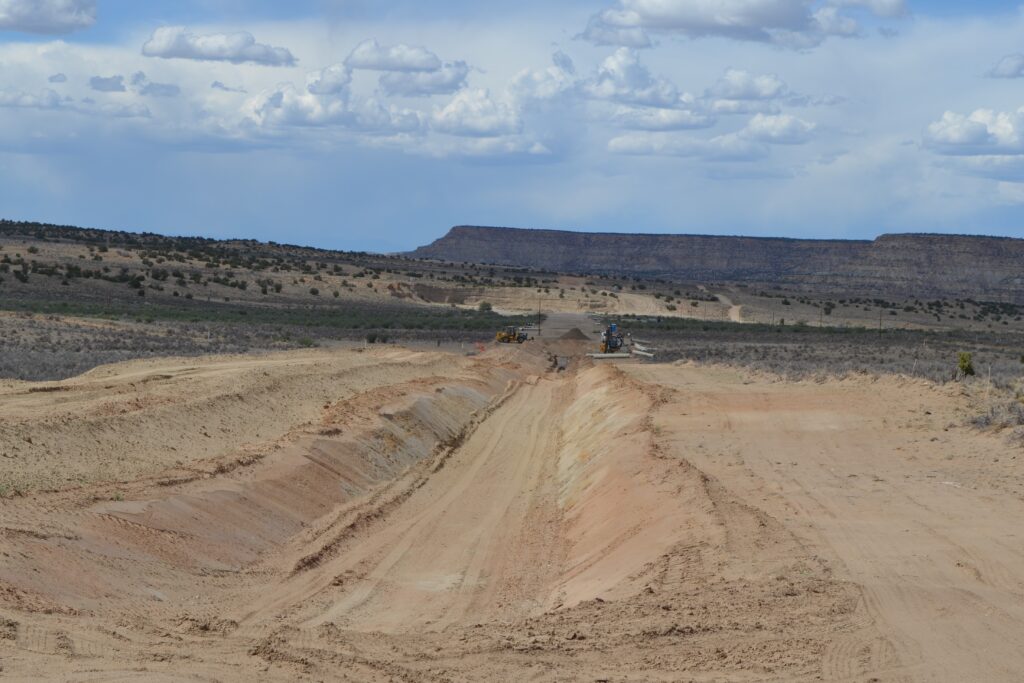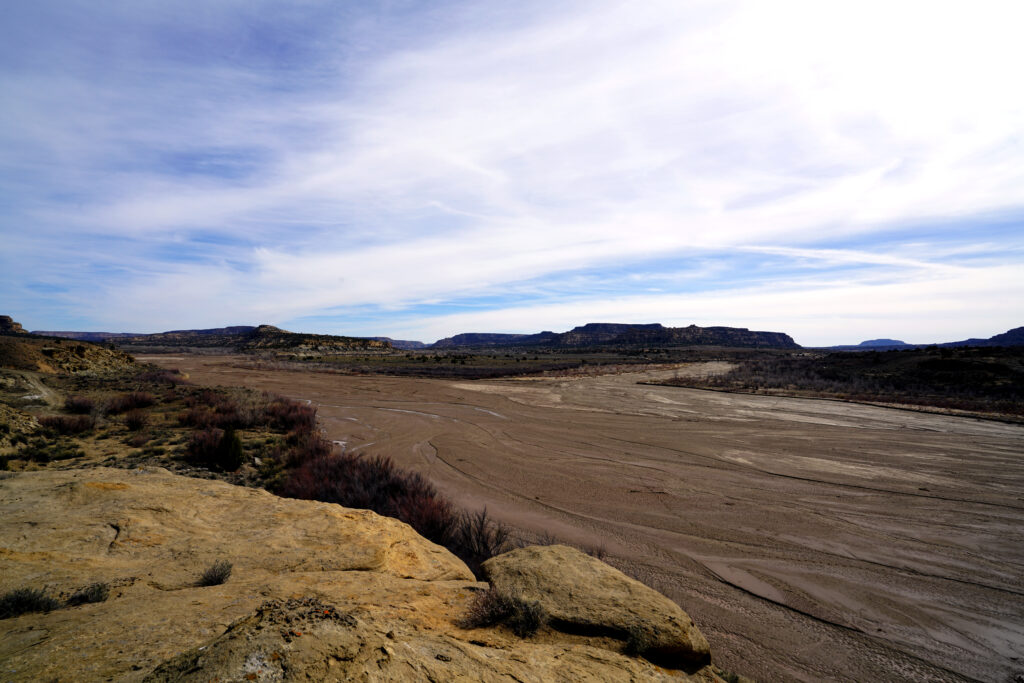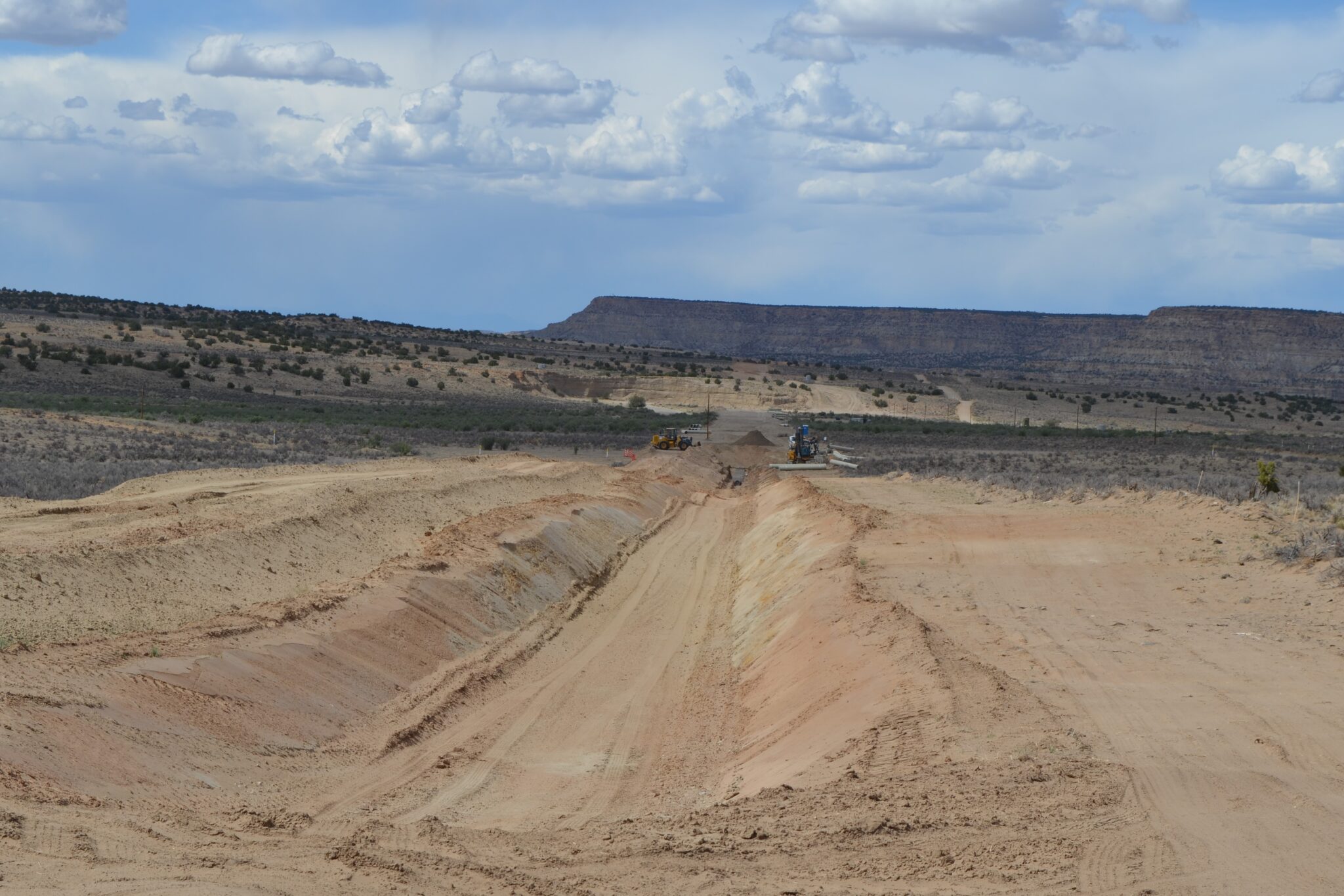
By Damon Hill
The Navajo-Gallup Water Supply Project (NGWSP) includes 300 miles of pipeline, several pumping plants, and two water treatment plants that will bring a long-term sustainable water supply from the San Juan River to parts of the Navajo Nation, the Jicarilla Apache Nation, and the City of Gallup.
Currently, more than 40 percent of Navajo Nation households rely on hauling water to meet their daily needs, and their groundwater supply is rapidly depleting. Insufficient water also limits the ability of residents of the Jicarilla Apache Nation to live and work outside of the reservation town of Dulce. Lack of reliable drinking water has also had a profound effect on families and communities during the pandemic. The Bureau of Reclamation estimates that the project will provide a long-term sustainable water supply to approximately 250,000 people by 2024.

 The Omnibus Public Land Management Act of 2009, Title X Part III (Public Law 111-11) signed on March 30, 2009, provided the authorization to construct this important project as a major component of the Navajo Nation San Juan River Basin Water Rights Settlement in New Mexico. Construction started in 2012 and is projected to continue beyond 2024, possibly into 2029, as facilities from the recently decommissioned San Juan Generating Station power plant are integrated into the project.
The Omnibus Public Land Management Act of 2009, Title X Part III (Public Law 111-11) signed on March 30, 2009, provided the authorization to construct this important project as a major component of the Navajo Nation San Juan River Basin Water Rights Settlement in New Mexico. Construction started in 2012 and is projected to continue beyond 2024, possibly into 2029, as facilities from the recently decommissioned San Juan Generating Station power plant are integrated into the project.
The clean, reliable supply of water has already begun to flow into underserved areas of the Navajo Nation, west of Albuquerque. This has resulted in families returning to the area and spurred plans to build a new health facility.
Parametrix, as a subconsultant to Logan Simpson Design, Inc., has been contracted by the Bureau of Reclamation to provide cultural resources program management support for the NGWSP as the Programmatic Agreement Program Manager (PAPM) team, which was established in 2013.
The PAPM team organizes regular meetings to bring together tribal representatives, Reclamation staff, multiple federal and state agencies, and other stakeholders. The team also organized field visits to sections of the pipeline prior to construction to gather valuable input and facilitate communication between tribes and the Bureau of Reclamation.

The COVID-19 pandemic has made maintaining these relationships and open communication more challenging. Face-to-face meetings involving dozens of individuals have been replaced by virtual meetings held via Microsoft Teams. Field visits were also put on hold, resulting in the PAPM team working with tribal partners and Reclamation archaeologists to develop a “virtual site visit” concept. The pilot virtual site visit combined video interviews with archeologists on the ground, maps providing cultural context, and drone footage. The presentation provided a way for tribal partners to view the affected sites and provide input to Reclamation. Based on feedback from the pilot video, a second virtual site visit, planned for early 2022, aims to incorporate tribal input directly into the video itself.
Despite the challenges stemming from the pandemic, the NGWSP has developed and deepened relationships between federal and state agencies, tribal governments, and other community stakeholders. It has shed light on the ways the legacy of the past, the needs of the present, and the aspirations of the future are interconnected. From the relationships built and lessons learned from this project, future large government projects could be better designed, constructed, and managed in ways that serve the needs and interests of all involved and affected.


